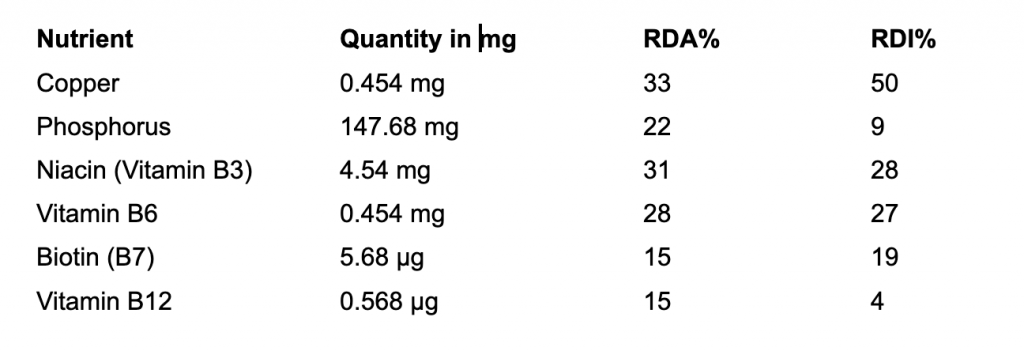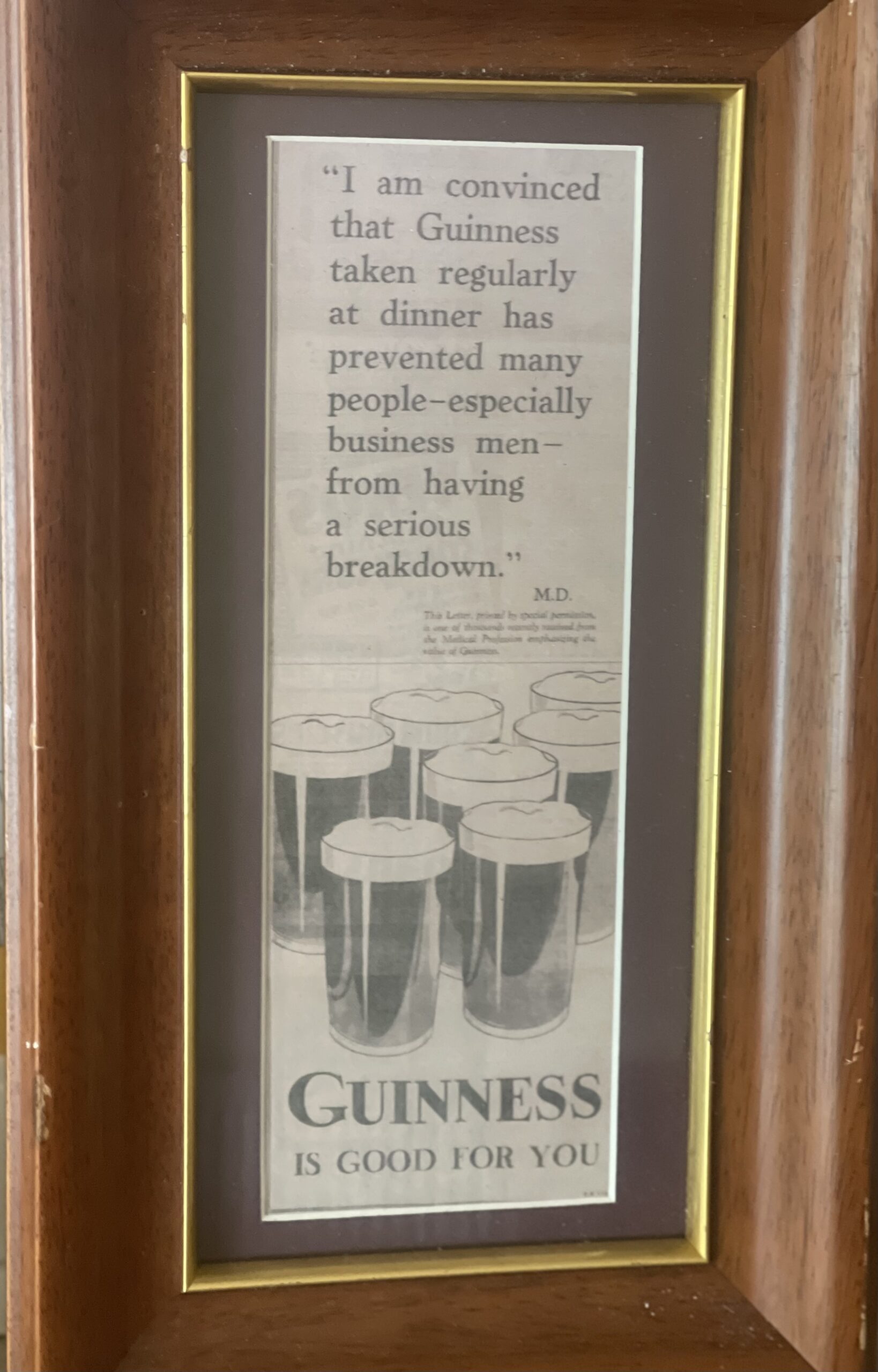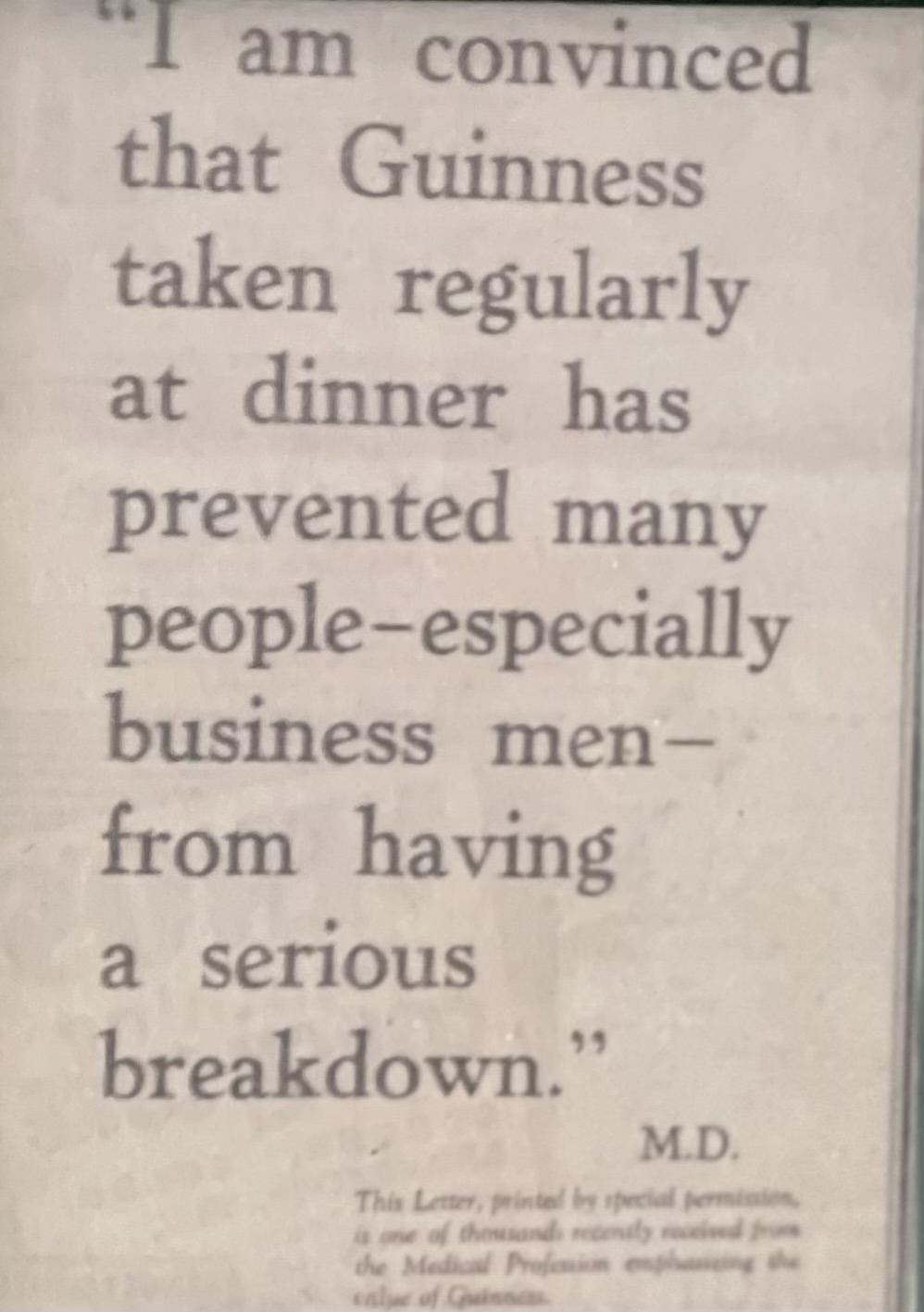40cm x 23cm
There was a period of time during which my father — who doesn’t even truly like beer — would insist on ordering Guinness whenever we found ourselves in a restaurant that offered it. He would take a sip from his glass filled with ebony liquid topped by a frothy foam, and I’d watch as he inevitably recoiled at the bitter flavor. “I don’t know why I ordered this,” he’d usually utter, shaking his head. “I guess I just believed that Guinness was supposed to be better than most other beers. But it isn’t even really a beer, right? It’s like its own thing.”
I can understand why my father would believe that Guinness is good. After all, the “Guinness is Good” slogan was the figurative linchpin holding together the Guinness brand for decades. Along with the belief that Guinness is good — which my father and several others would vehemently disagree with — exists the belief that Guinness is good for you.
By fueling this belief, Guinness dangles the elusive hope that all barflies crave: That it’s possible to guzzle alcohol and reframe what everyone knows to be a commonly deleterious activity as surreptitiously healthy. So those are the real questions in need of answering: Can you sip a Guinness and skip the multivitamin? Can you literallydrink to your health?
WHY WOULD ANYONE BELIEVE THAT YOU COULD?
Because Guinness did everything in its power to ensure that people believed it to be true.
R
Even the Guinness ad campaigns of the 1920s and 1930s — again, built around the ubiquitous “Guinness is Good for You” slogan — were replete with fantastical references to the healthful benefits ostensibly lurking within Guinness. The standard style of the company’s advertising from this era tended to feature a general reference to the value of Guinness as a health tonic, one or more specific claims about the ways in which Guinness benefits its imbibers and then quotes allegedly extracted from the thousands of supposed letters that arrived in Guinness’ offices each month penned by “medical professionals.” Suspiciously, the medical professionals were never named; they were only referenced by their certifications as holders of the MD, LRCP, LRCPI, MRCS and MB designations, many of which are exclusive to the U.K., or are now outdated.
Some of the alleged claims about the medicinal value of Guinness are as follows:
Another Guinness advertisement included a statement that Guinness is “particularly suitable as a tonic restorative after influenza, bronchitis and other illnesses,” along with a supposed doctor’s recommendation that Guinness should be indulged in daily for its medicinal value.
WHAT IS THE TRUE NUTRITIONAL VALUE OF GUINNESS?
Well, we can start by dissecting a more contemporary analysis of Guinness. In a 2005 article from the Hartford Courant bearing the wishful-thinking title “Cheers! Certain Brands of Beer May Be Good for You,” Guinness was declared to be superior to other beers in a relative sense. It was lauded for having less alcohol, along with fewer calories and carbohydrates than Samuel Adams, Budweiser and Heineken, and Guinness proved to be twice as effective as Heineken at preventing blood clots in a University of Wisconsin study.
From there, some of the language requires parsing so as to minimize inappropriate attributions; Guinness is credited with possessing flavonoids, and these flavonoids had been demonstrated to be superior to vitamins C and E with respect to the abilities of those respective vitamins to prevent LDL cholesterol from clogging arteries.
First of all, it’s niacin — part of the vitamin B complex — that’s most heavily credited amongst the vitamins with LDL reduction. Second, the same flavonoid logic can be applied to dark chocolate, and often is. The logical takeaway in that scenario should be that dark chocolate is superior to other forms of chocolate in terms of its relative health value, which it arguably is, as opposed to taste, which it definitely isn’t.
In fact, it’s highly possible that the makers of Guinness had to sell consumers on its somewhat nebulous health benefits precisely because it wasn’t hitting any home runs in the taste department. For instance, another Guinness ad campaign from the same 1930s era provided readers with a lengthy explanation for how Guinness is intended to be consumed, instructing them how to draw Guinness into their mouths in a way that enables it to bypass the sweetness-detecting taste buds, and practically chastised customers for possessing immature palates if they felt displeasure derived from experiencing Guinness’ sour taste.
In terms of the raw numbers, when it comes to the antioxidant content in the form of the flavonoids in Guinness, they collectively possess 10 percent of the antioxidant value of a comparable amount of brewed coffee. In other words, Guinness may have some antioxidants present, but to describe it as “antioxidant rich” would be a massive stretch. Basically, if you’re looking for a substantive source of antioxidants, there are plenty of other foods and beverages you can consume.
As for vitamins and minerals, it’s critical that you consider the source that micronutrient information is being filtered through. The labeling of food items in the U.S. requires Reference Daily Intakes (RDI), while other organizations use guidelines like Recommended Daily Allowances (RDA). The recommendations generated by each are different, which means that selectively choosing one instead of the other and falling prey to confusion caused by the similarities between the two can have massive implications on how adequate you believe your food to be.
Here are the top six micronutrients contained in a pint of Guinness Stout — the most micronutrient-abundant beer within the Guinness family — along with its quantity, its RDA percentage and its RDI percentage:

Now that we’re all speaking the same language, we can get down to brass tacks. Aside from the quantity of copper present in the Guinness Stout, and the marginal amount of phosphorus contained therein, there’s nothing on this list that doesn’t get absolutely demolished by a can of Monster Energy. We can put Monster on trial for other reasons, but at least they deliver on their advertising promise of energy and never masqueraded as an all-purpose tonic for illness recovery.
Speaking of promises made in advertisements, there’s no evidence that ordinary vitamin content has a strong connection with either improving or inhibiting sleep. On the other hand, there’s an abundance of evidence — and probably plenty of personal anecdotes you can draw from — that underscores the ease with which alcohol can help to induce sleep. When you get right down to it, the “cure for insomnia” offered by Guinness was a nightly dose of drunkenness, which is also what would be required to drive most of the vitamin values of Guinness Stout into 100 percent territory.
SO GUINNESS ISN’T NUTRITIOUS?
Research indicates that Guinness is certainly more abounding in some vitamins and nutrients than several of its alcoholic brethren. Still, you’re likely to become sloppy drunk if your pursuit of micronutrient sufficiency requires you to piggyback on the overhyped shoulders of Guinness. My advice: If combining alcohol with vitamins is your thing, then pop a multivitamin and wash it down with something that actually tastes pleasant.
Imagination is something Guinness Advertising has never been short of… From John Gilroy’s hapless zookeeper and his menagerie of creatures to a Polynesian surfer and a herd of white horses; from messages in bottles setting sail across the ocean to a single, heart-stoppingly enormous wave. Guinness have been carving out their own creative path for almost a century with decades of extraordinary and enduring print, TV and digital campaigns to their name, and hopefully they will continue to push boundaries to tell stories to the world. Here’s to original thinking !











